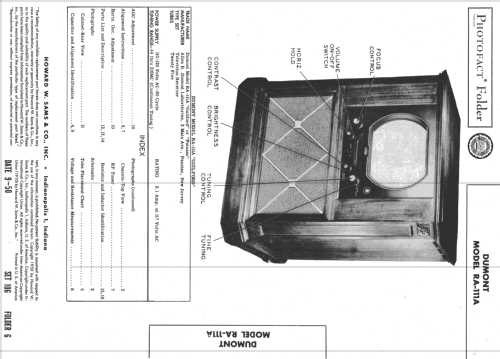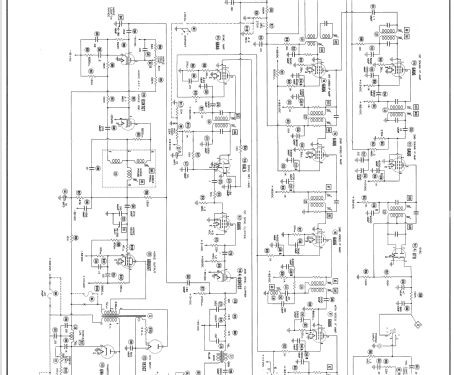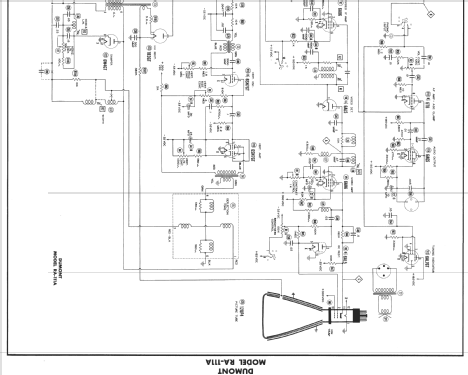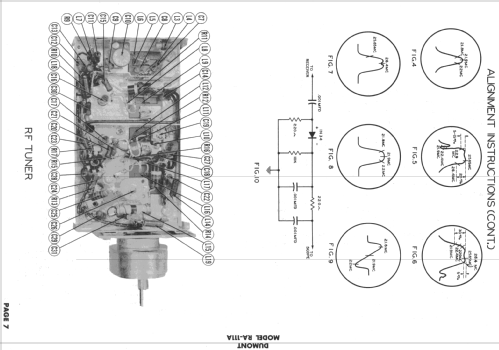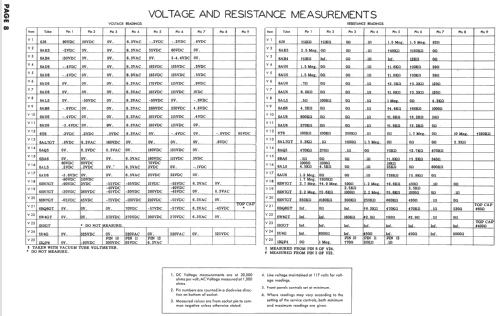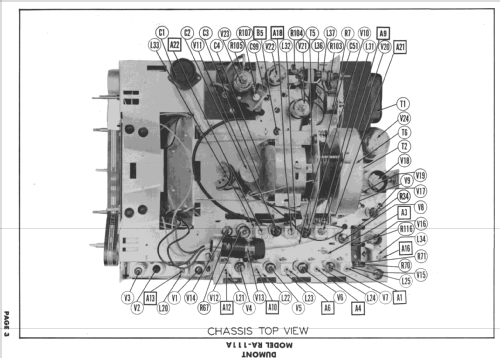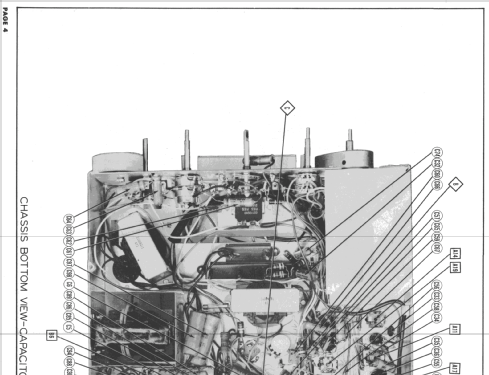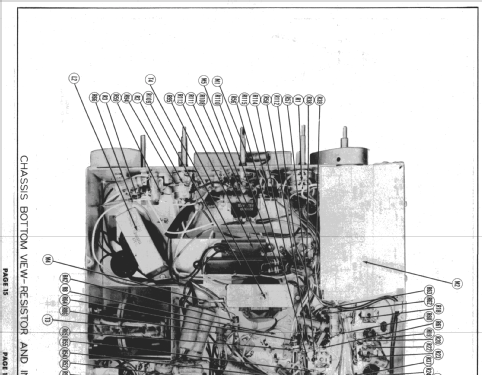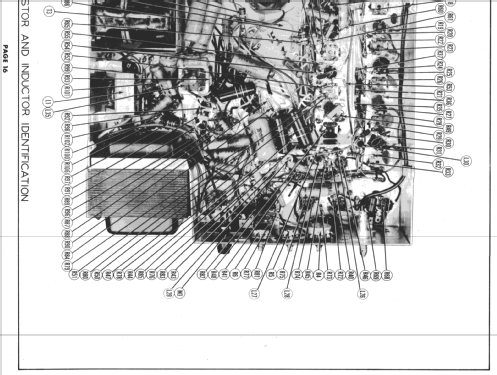Guilford RA-111-A5
DuMont Labs, Allen B., Inc.
- Country
- United States of America (USA)
- Manufacturer / Brand
- DuMont Labs, Allen B., Inc.
- Year
- 1950
- Category
- Television- and Radio Receiver, perh. also + Rec. etc. (TV Radio)
- Radiomuseum.org ID
- 169914
-
- alternative name: Dumont Television & Radio
Click on the schematic thumbnail to request the schematic as a free document.
- Number of Tubes
- 25
- Valves / Tubes
- 6J6 6AK5 6AB4 6AU6 6AU6 6T8 6AQ5 6AU6 6AU6 6AU6 6AU6 6AL5 6AH6 12QP4 6BA6 6AL5 6SN7GT 6BQ6 1B3GT 6W4GT 5U4G 6AU6 6SN7GT 6SN7GT 6AL7GT
- Main principle
- Superheterodyne (common); ZF/IF 26400/21900 kHz
- Wave bands
- Wave Bands given in the notes.
- Power type and voltage
- Alternating Current supply (AC) / 117 Volt
- Loudspeaker
- Permanent Magnet Dynamic (PDyn) Loudspeaker (moving coil) / Ø 10 inch = 25.4 cm
- Power out
- 1 W (unknown quality)
- Material
- Wooden case
- from Radiomuseum.org
- Model: Guilford RA-111-A5 - DuMont Labs, Allen B., Inc.
- Shape
- Console with any shape - in general
- Dimensions (WHD)
- 25.6 x 35.5 x 20.7 inch / 650 x 902 x 526 mm
- Notes
- In 1950, DuMont introduced the RA-111A series of 12-inch CRT TVs (or "Telesets" as DuMont called them) to replace the RA-103 line. These models include the 4-gang spiral Mallory-Ware Inductuner introduced on the RA-109 series, which tunes continuously from 44-216 MHz to cover the VHF low (including Channel 1, which was no longer in use), FM radio, and VHF high bands. Like many other DuMont Telesets, a 6AL7GT eye tube serves as a tuning aid. By this time, most other manufacturers had adopted click-type or turret tuners; DuMont stayed with continuous tuners, which makes their sets unique.
There are four models with different cabinet styles in the RA-111A series: The Putnam table model (RA-111-A1 in mahogany; RA-111-A4 in blonde) and the Guilford open console (RA-111-A2 in mahogany; RA-111-A5 in blonde).
- Price in first year of sale
- 330.00 $
- Source of data
- -- Original prospect or advert
- Circuit diagram reference
- Photofact Folder, Howard W. SAMS
- Literature/Schematics (1)
- Rider TV 5-26; SAMS Photofact set 106 folder 6
- Author
- Model page created by Thomas Albrecht. See "Data change" for further contributors.
- Other Models
-
Here you find 308 models, 160 with images and 250 with schematics for wireless sets etc. In French: TSF for Télégraphie sans fil.
All listed radios etc. from DuMont Labs, Allen B., Inc.
